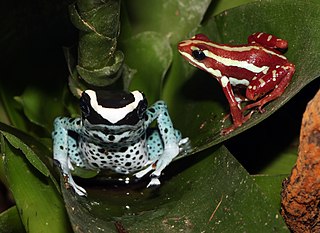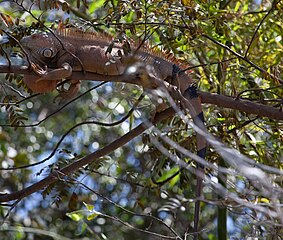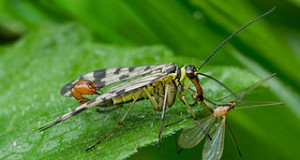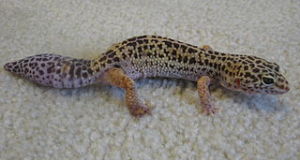Choosing a live amphibian or a reptile as a holiday gift may be a nice gesture, but it is also fraught with potential problems. Please see The 5 Best Reptiles and Amphibians to Choose as Holiday Gifts for further cautions. General considerations aside, certain species are almost always a bad idea…even when the recipient has some experience. Unfortunately, many of these “bad choices” are promoted as being easy-to-care-for, and indeed all have some very desirable qualities. In the right hands, some can make great, long-lived pets – but, unfortunately, the “right hands” are often few and far between.
Please see the articles linked under Further Reading for detailed information about the animals mentioned in this article, and be sure to post any questions you may have below.
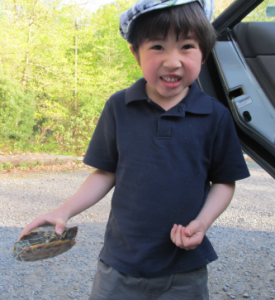 Red-Eared Slider, Trachemys scripta elegans
Red-Eared Slider, Trachemys scripta elegans
Bred in the millions on farms in the American Southeast, Sliders are among the most readily available of all reptilian pets. Responsive and hardy, they invariably surprise first-time owners with their rapid growth rate. An adult female, which will measure 8-12 inches when fully grown (the one pictured here is moderately-sized), requires a 75-100 gallon aquarium. Powerful filtration, frequent water changes, UVB exposure, heat lamps, water heaters, and a proper diet are essential in meeting their needs.
With proper care, these active turtles can easily live into their 30’s. However, few people are prepared to commit the time and expense necessary to achieve this. As a consequence, millions of released pets and their progeny now inhabit dozens of countries worldwide – I’ve seen them in places as far flung as Kyoto, Japan temple ponds and sewage catchment basins in Caracas, Venezuela.
Young Burmese Pythons or other Giant Constrictors
I’ve had the immense good fortune of working with all of the giant constrictors in zoos, and with some in the field as well. I realize that the ability to live out this childhood dream is not available to most people, and so I’m somewhat torn when asked to comment on Burmese Pythons, Anacondas and related species as pets. Unfortunately, all are capable of killing an adult human, and they are far too large to be accommodated in most homes.
Novices usually find it hard to imagine that the slender, 18-36 inch-long youngster they buy will need a 6-foot long cage within 2-3 years and a professionally-built room-sized enclosure shortly thereafter. A 10-foot-long Burmese Python or similar snake can be expected to consume 100-150 pounds of food yearly. The nonsense about “dog tame” giant snakes prevalent on the internet should be ignored – snakes, no matter how long in captivity, will not distinguish between food and owner, and will bite anything moving within range!
Dart Poison Frogs, Dendrobates spp., and relatives
I recall a time when these living gems were rarely seen even in zoos. Today, captive bred specimens from a startling array of species are readily available in the pet trade. So colorful as to appear unreal, Poison Frogs are bold and active by day, and care for their tadpoles in “mammal-like” fashion – hard to resist!
Their tiny size might tempt the unwary into a quick purchase. But, in contrast to the other animals mentioned here, it is small size that renders Poison Frogs as difficult captives. They take live food only, and suitably-sized insects may be difficult to supply. Pinhead crickets and fruit flies, the most easily obtainable foods, are not an adequate long term diet. Springtails, flour beetle grubs, termites, leaf litter invertebrates, aphids, and other wild-caught insects are an integral part of their diets. Poison Frogs are also sensitive to ammonia in the water and substrate and to both cool and overly-warm temperatures, and thrive best in terrariums stocked with live plants.
The African Spurred Tortoise, Geochelone sulcata
These engaging tortoises exhibit a degree of responsiveness more commonly associated with dogs than reptiles, and captive-bred hatchlings are available for modest prices. Evolution in a harsh environment has primed them for rapid growth – two individuals that I’m familiar with topped 60 pounds by age 5, and an older animal tipped the scales at 190 pounds!
Few hobbyists are equipped to properly care for these behemoths, the largest of all mainland tortoises. In fact, a ½ acre outdoor exhibit proved too small for a pair of 80-pounders under my care at the Prospect Park Zoo. In most areas of the USA, winter care requires indoor accommodations, which translates into a room-sized enclosure for an adult.
Green Iguana, Iguana iguana
Cute, brilliantly-colored, and a mere 7 inches in length, hatchling Green Iguanas are often promoted as suitable pets for children and novice reptile keepers. But these arboreal lizards have very specific husbandry needs, and their adult size (4-6 feet in length) and potentially aggressive behaviors are serious considerations. Males affected by hormonal surges can be quite dangerous, as attested to by the numerous stitches on the neck of a zoo colleague of mine, and a scar on my arm; when disturbed, either sex may bite, lash out with the tail, or scratch (please see the article linked below for more on male aggression). At minimum, an adult Green Iguana will need a custom-made cage measuring 6 x 3 x 6 feet in size. Ample UVB and strict attention to their nutritional needs, which change with age, are necessary if they are to thrive.
Further Reading
 That Reptile Blog – Reptile, Amphibian and Exotic Pet Care and Information
That Reptile Blog – Reptile, Amphibian and Exotic Pet Care and Information


